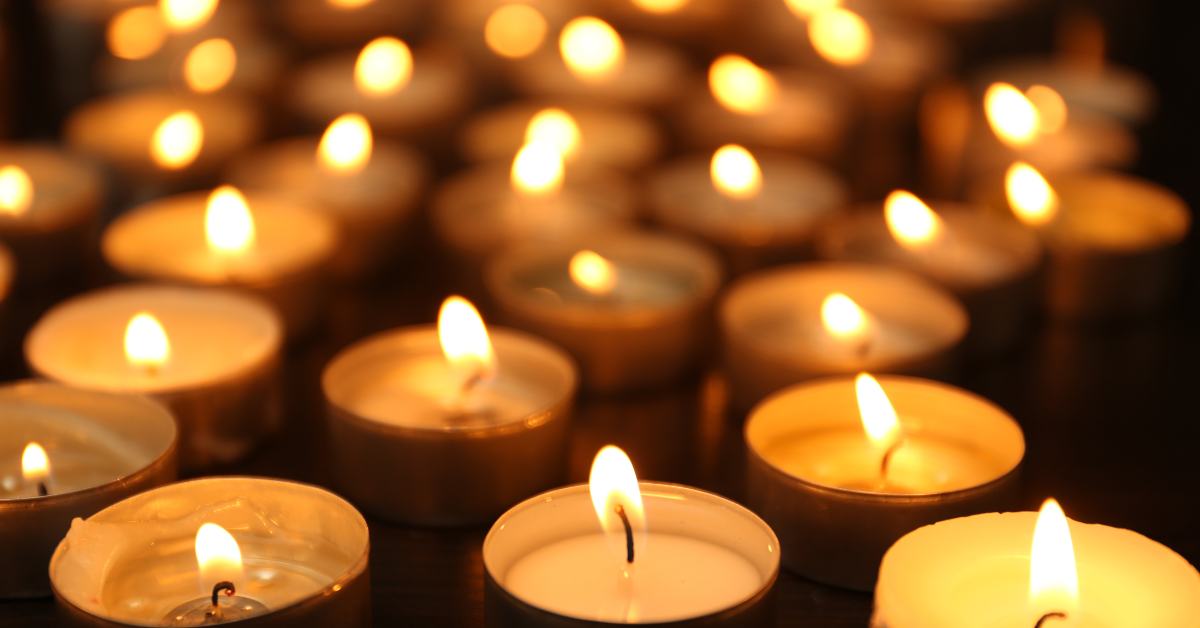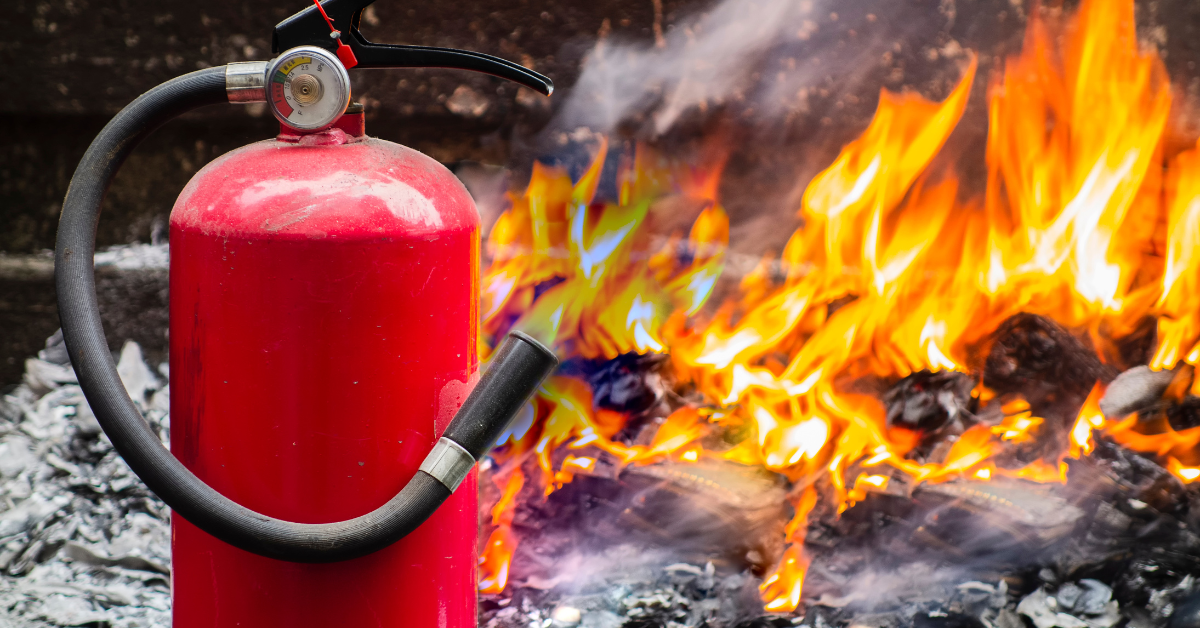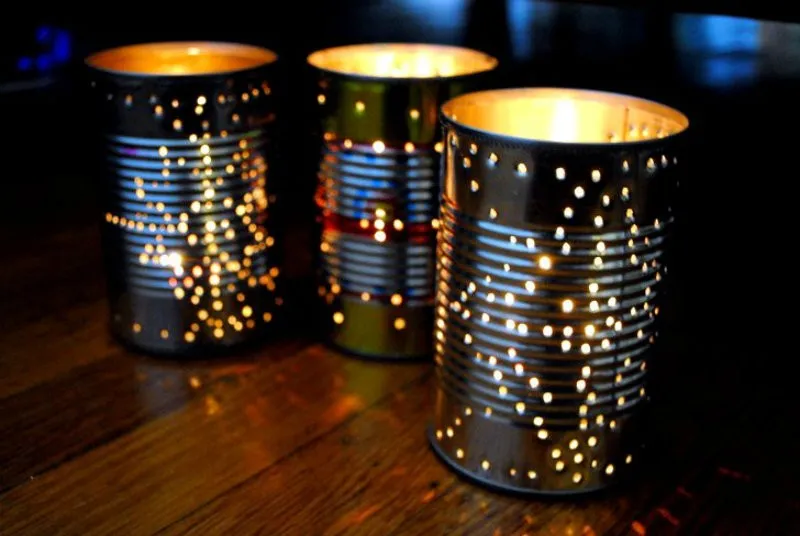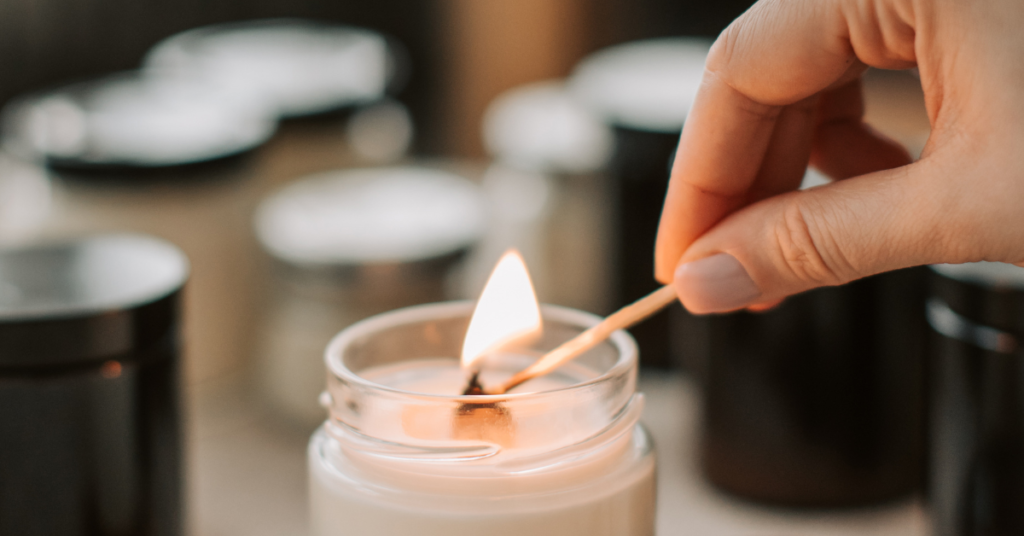Have you ever found yourself amidst a power outage on a chilly night, with nothing but a candle flame flickering against the darkness? The question may arise: Can a candle heat a room? This is more than just a fleeting thought for emergency preppers, campers, and budget-conscious individuals.
The idea of harnessing a candle’s warmth, leading to the invention of candle heaters, is a blend of ancient simplicity and modern necessity. In the following discourse, we delve into the science of candle heating, exploring the effectiveness and safety of candle heaters as a warming solution for those cold, powerless nights.
And to answer your question – Can a candle heat a room? – In short: No, a candle alone can’t heat an entire room.
But there are other similar but better options to heat a room more effectively with the warmth of candles. Keep on reading to reveal these!
The Science Behind Candle Heating
Understanding the Heat: The BTU Factor
The first step in understanding candle heating is to get a grip on how heat is measured. We use British Thermal Units, or BTUs for short, in the heating world. A BTU is the amount of heat required to raise the temperature of one pound of water by one degree Fahrenheit. It’s the standard unit of measure for heat in the U.S. and will play a major role in our candle heating system calculations. [1]
So, how much heat can a candle produce? On average, a single candle generates about 75 to 85 BTUs per hour.
Not too shabby for a little wick and wax, right?
But before you start hoarding candles in anticipation of the next cold snap, let’s put these numbers in context.
How Much Heat Do You Need?
Here’s another vital number to keep in mind: it takes roughly 34 BTUs per hour to warm one square feet foot of space.

So, if you’re trying to heat a 100-square-foot room, you need around 3,400 BTUs per hour. If we use our average candle heat output of 80 BTUs, we’d need about 42.5 candles to heat the room.
Round that up for simplicity, and you’re looking at a whopping 50 candles to heat a 100-square-foot room. [2,3]
These numbers might sound startling, but they’re grounded in scientific research and studies. However, before you go off and turn your living room into a candlelit cave, let’s discuss the practicality and safety of such a setup.
Candle Safety: When More Isn’t Merrier
Let’s face it: having 50 candles lit in a room is not a safe or practical solution. Beyond the obvious fire hazard, there’s also the issue of indoor air pollution from the candle soot. And let’s remember the time and energy it would take to light and monitor all those candles. It’s just not feasible.
So, what’s the solution? Enter the candle heater. This ingenious device utilizes the heat from one or more candles and amplifies it using a heat-resistant container and a few ceramic flower pots. The result is a safe, efficient, and reliable heat source that can keep you warm when the power’s out.
In the realm of emergency preparedness, it’s crucial to understand the science behind the tools and strategies we use. Knowledge is power; in this case, it could mean the difference between staying warm and safe or risking a fire hazard in a blackout. So, keep those candles for ambiance and emergencies, but consider a more efficient and safe solution like a candle heater when it comes to heat a room with a candle.
The Pros and Cons of Candle Heaters
As a seasoned survivalist, I’ve always been intrigued by alternative heating sources. One option that commonly comes up in survivalist circles is the candle heater. But what exactly is it, and how does it work? Let’s delve into the details.
What is a Candle Heater?
A candle heater is a simple device that utilizes the heat from one or more candles to warm a metal container or a flower pot. This container or pot then radiates the heat to the surrounding air. It’s a simple and ingenious solution, especially when traditional heating sources are unavailable.
The Benefits of Using a Candle Heater
In the right circumstances, a candle heater can be a lifesaver. Here are some benefits of using one:
- Emergency Heat Source: In a small, enclosed area, a candle heater can provide warmth and help prevent hypothermia during a blackout or other emergencies. It won’t heat your entire house, but it could significantly affect a small area like a tent or a room.
- Ambiance: Aside from practical benefits, the flickering light and scent of the candles can create a cozy and relaxing atmosphere. Something is soothing about the glow of a candle, especially in an emergency situation where comforts may be few and far between.
- Cost-Saving: If you find yourself with a surplus of candles, a candle heater can save you some money on heating costs. It can supplement other heating methods or be a way to put leftover candles to good use.
The Drawbacks of Using a Candle Heater
While it’s a useful tool, a candle heater comes with its own set of drawbacks:

- Limited Heating Capacity: A candle heater cannot heat a large or poorly insulated space effectively or comfortably. It’s great for a small, closed area, but don’t expect it to warm up your entire living room.
- Safety Hazards: Candle heaters can pose fire and carbon monoxide hazards if not used properly or monitored carefully. It’s crucial never to leave a candle heater unattended and to ensure it is positioned safely away from flammable materials. Even the candle wax can potentially cause fires.
- Resource Consumption: Depending on the size of the candles and the duration of use, a candle heater can consume a lot of candles and generate a lot of waste. There are more sustainable options for long-term use.
The candle heater is a testament to the ingenuity of survivalists. It’s a simple, low-tech solution that can provide warmth in emergency situations. However, like all tools, it comes with its own set of pros and cons. As always, the key to effective use is understanding its limitations and using it responsibly. Stay warm, stay safe, and remember – preparation is the best defense against the unexpected.
The Types of Candle Heaters
In this section, we’ll explore three types of candle heaters for emergencies:
DIY Flower Pot Candle Heater, efficient but requiring caution; compact DIY Metal Can Candle Heater; and safe and convenient Commercial Candle Heater. Choose based on your needs and budget, but always prioritize safety.
The Flower Pot Candle Heater
First on our list is the humble flower pot candle heater. This is a DIY option that anyone can put together with a few household items, and it’s perfect for those unplanned blackouts. You’ll need one or more tealight candles, a non glazed terracotta flower pot, some nuts and bolts, and a metal stand or tray.
Because the use of the flower pot heater is very dangerous, we don’t want to go to deep and show how to set it up. Nevertheless we let you know how it works:
The “beauty” of this heater lies in its simplicity. Your candle(s) act as the heat source, while the pot becomes a heat reservoir, slowly releasing warmth into your space. The nuts and bolts serve as a stand, raising the pot above the heat source and allowing air to flow underneath.
Please be aware, place the hot flower pot away from flammable materials. It happened to some people that the pot got too hot and exploded. That’s why it is not our favorite way to heat a room with candles.
This guy explain why this type of candle heater is dangerous:
But what makes this heater a favorite among preppers? Well, it’s cheap, easy to make, and surprisingly effective. However, it’s important to remember that this isn’t a space heater. It won’t warm up large areas but can make a small room more comfortable during a power outage.
The Metal Can Candle Heater: A Compact Heat Source
Next up, we have the metal can candle heater. This is another DIY option, perfect for those who prefer pillar candles over tealights. To make this heater, you’ll need an empty metal can and some holes punched in the sides.

The can’s metal body heats up quickly, radiating warmth into your space. The holes allow heat to escape, increasing the heater’s efficiency. This heater is compact, lightweight, and perfect for small spaces. However, keep in mind that the can get very hot, so handle it with care.
The Commercial Candle Heater: An Off-the-Shelf Solution
Last but not least, we have commercial candle heaters. These ready-made heaters come in various shapes, sizes, and designs. A perfect example is the UCO Candlelier Deluxe Candle Lantern.
These heaters are designed with safety and efficiency in mind. They’re made of quality materials, have built-in safety features, and are usually more powerful than DIY options. However, they’re also can be more expensive.
Choosing between these candle heaters largely depends on your needs and budget. Are you a DIY enthusiast with a knack for repurposing household items? Or do you prefer an off-the-shelf solution ready to use out of the box? Whatever your preference, there’s a candle heater out there for you. Remember, being prepared isn’t just about having the right equipment—it’s about knowing how to use it effectively. So, whether you opt for a DIY or commercial heater, ensure you understand how it works and practice using it safely.
Next steps: Feel free to explore our our other articles for more practical tips to learn more about Propane Heaters or emergency preparedness when the power goes off: Survival Tips for Power Outages
Tips and Tricks for Using Candle Heaters
From selecting the right candles to positioning your heater and maintaining proper ventilation, these guidelines will ensure you enjoy the warmth of your candle heater while prioritizing safety for you and your loved ones:
Choosing the Right Candle for Your Heater
Knowing what type of candle to use for your heater is crucial in ensuring its efficiency. The best candles for this purpose are unscented, long-lasting, and high-quality.
Why unscented, you ask? Well, scented candles tend to produce more soot, which can accumulate in your heater over time and reduce its effectiveness.
High-quality candles burn longer and more steadily, giving you more time to enjoy their warmth.
Ensure the candles fit nicely into your heater without being too snug or loose.
Positioning Your Candle Heater
Where you place your candle heater can significantly affect how well it heats your space. Placing it on a stable, flat, and heat-resistant surface is best. This helps to prevent any accidental toppling over of the heater, which could cause a fire risk. Also, make sure the heater is away from flammable materials, children, pets, and any drafts. These precautions will ensure that the heater operates safely and effectively.
Monitoring Your Candle Heater
So you’ve lit your candle heater, and it’s doing its job. Great! But remember, just like any other heat source, it needs to be monitored closely. Never leave your candle heater unattended or let it burn overnight. If left alone, the candle could burn out and cause the heater to overheat, leading to a potential fire hazard.
Ventilating Your Space
While candle heaters can provide adequate heat, they can also cause a buildup of carbon monoxide and deplete the oxygen in your room. Therefore, it’s essential to ventilate your room regularly when using a candle heater. Proper ventilation can be as simple as cracking a window open or using a fan to circulate the air.
Insulating Your Room
Finally, remember that a candle heater is just one part of your heating solution. You should also consider other methods to insulate your room and retain heat.
Close doors and windows to prevent drafts, cover any cracks or gaps where heat can escape, wear warm clothing, and use blankets to keep yourself cozy.
Every bit of heat saved is a win!
In conclusion, using a candle heater effectively and safely requires a bit of thought and care. By following these tips and tricks, you can enjoy the warmth of your candle heater while ensuring that you and your loved ones stay safe. So, ready to light up that candle heater?
Last Words
Venturing into the quest of answering, can a candle heat a room?
We’ve traversed through the science of heat, the modest warmth of candles, and the innovative leap toward candle heaters. While candles alone fall short, candle heaters step in to amplify their warmth, albeit with certain limitations and risks.
From DIY to commercial types, candle heaters cater to different needs, offering a glimmer of warmth in colder scenarios. We’ve also shared essential safety and efficiency tips for an informed candle heater experience.
The journey has illuminated that with a touch of innovation, the humble candle’s flicker can indeed morph into a comforting glow amidst the chill.

